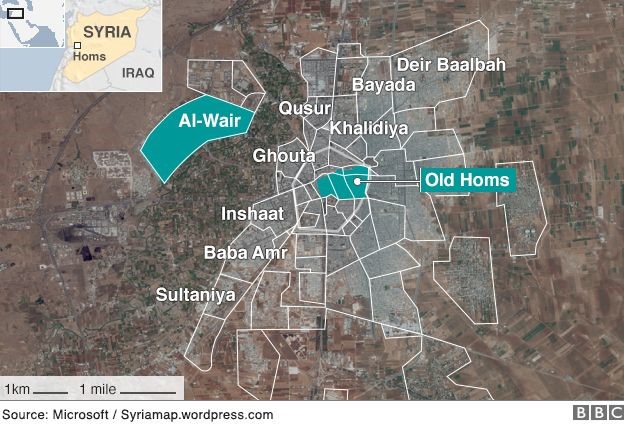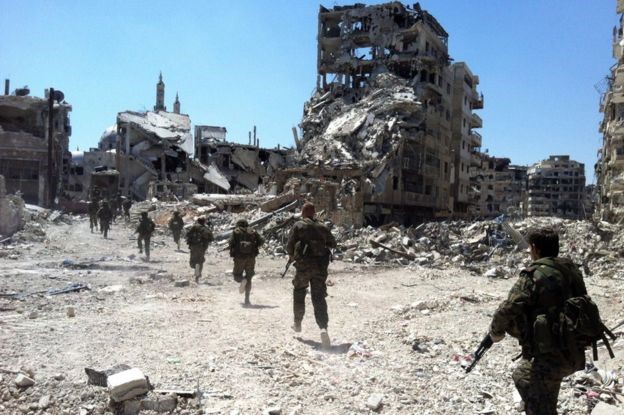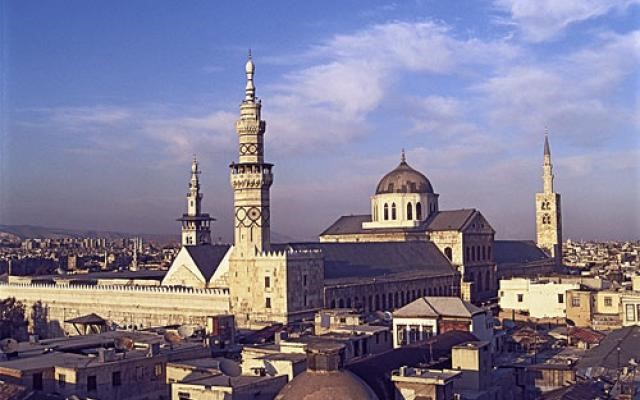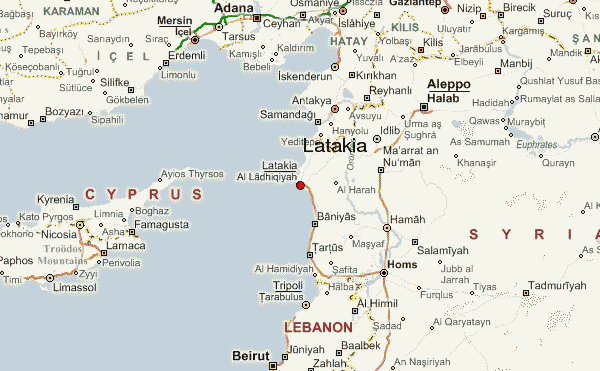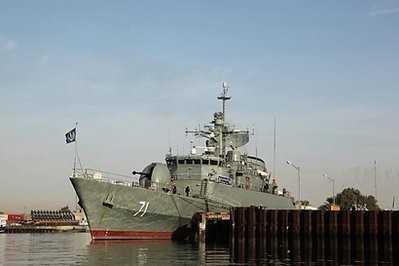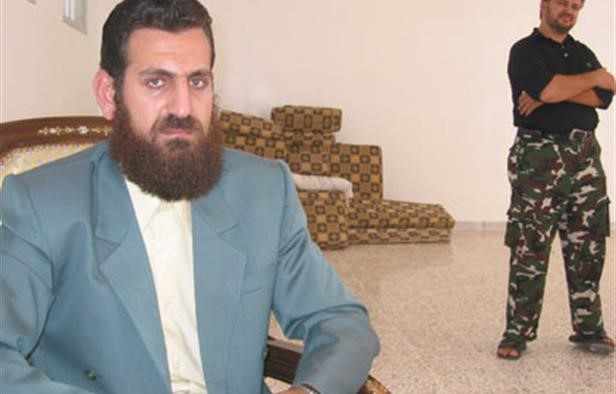Andrew McGregor
March 22, 2012
While hard evidence of an Iranian or Lebanese Hezbollah military presence in Syria is in short supply, commanders of the opposition Syrian Free Army (SFA) continue to maintain that large numbers of such forces are in the frontlines of the Syrian regime’s efforts to suppress anti-government activism.
On March 1, FSA Brigadier General Husam Awwak (formerly of Syrian Air Intelligence) claimed regime loyalists had been joined by an Iranian armored brigade and Hezbollah fighters acting as snipers, bombers and street-fighters (al-Sharq al-Awsat, March 1). According to the Brigadier, the Iranian armored brigade has been deployed since 2007 near Deir al-Ashayir (actually in southeastern Lebanon), close to Palestinian refugee camps controlled by Ahmad Jibril’s Popular Front for the Liberation of Paalestine – General Command (PFLP-GC). Awwak added: “This is the first time that this information is made public.” The alleged armored brigade was quickly inflated into Iranian “armored divisions” in the Israeli press (Israelinationalnews.com, March 1). Awwak also claims Hezbollah has sent three brigades (numbered 101, 102 and 103) to Syria, describing the 103rd Brigade as a “terrorist Shiite regiment specializing in assassinations and bombings.” Various reports in the Chinese, Israeli, Turkish and Pan-Arab press suggesting 15,000 troops from the Revolutionary Guards’ al-Quds unit have deployed in Syria appear to be without foundation.
Brigadier General Husam Awwak
Hezbollah leader Sayyid Nasrallah has denied the presence of any fighters from his movement in Syria, describing the claims as “an attempt to distort the Resistance’s image” (al-Manar, February 24). Besides the alleged presence of Iranian and Hezbollah forces, FSA officer Ammar al-Wawi suggests followers of militant Iraqi Shiite leader Muqtada al-Sadr have also joined the Syrian security forces (AFP, March 14).
Iranians travelling or working in Syria are increasingly subject to abduction by FSA forces. At least two parties of pilgrims have been kidnapped. Seven Iranians kidnapped in Homs by the FSA’s “Farouk Brigade” appeared in an FSA video confessing they were snipers who “killed a lot of women and children” under the supervision of Syria’s Air Force Intelligence unit. However, it was observed that the names of five of the seven “snipers” matched those of five Iranian engineers kidnapped in Homs last December after spending two years working on a new power plant (Press TV [Tehran], December 24, 2011; February 10; al-Jazeera, January 27).
FSA financing comes both internally and externally from “Syrian merchants, charities and arms traders” according to Awwak. Some armed support came from Libya, but these fighters have returned to Libya due to “the internal situation” in that country. The FSA is still waiting for promised support from the Gulf nations and Egypt. The Syrian Brigadier also made a strange and nostalgic appeal to the Egyptians, reminding them of the political unification of Syria and Egypt in the short-lived United Arab Republic (1958-1961): “We consider ourselves part of the Egyptian army since the days of Egyptian-Syrian unity during Gamal Abd al-Nasir’s rule. The so-called First Army of the Egyptian armed forces is still in Syria. We are happy with any support that Egypt gives.”
The unification last week of the FSA and the Syrian National Council (SNC), an umbrella opposition group, in a merger facilitated by Turkey appears to be part of an effort to present a united front in order to free up arms supplies from Turkey, Qatar and Saudi Arabia (al-Sharq al-Awsat, March 14). However, even as some differences receive a temporary patch-over, new armed opposition movements such as the Syrian Patriotic Army (SPA) and the Syrian Liberation Army (SLA). Some of the many opposition “Brigades” proliferating across Syria oppose the prominence of the Muslim Brotherhood in the SNC, while others have adopted anti-Shi’a, anti-Alawi Sunni extremism as their guiding principle. Some have even adopted the slogan: ”Christians to Beirut, Alawites to graves” (Independent, March 14). However, based on the Libyan precedent, large quantities of arms from external sources seem unlikely to begin flowing until they can be delivered to a single central authority. SNC leader Burhan Ghalioun has proposed the creation of a Military Council to oversee the distribution of arms to the various armed opposition groups, but does not appear to have the support of the FSA’s Riyad al-Asa’d for such an initiative (Independent, March 14). The Syrian regime is not experiencing the same problems; Russia’s deputy defense minister, Anatoly Antonov, announced on March 13 that Russia will honor its existing weapons contracts with Syria and will continue supplying the Syrian regime with new arms (al-Sharq al-Awsat, March 14).
Interestingly, both sides in the struggle for Syria claim that Israel is supporting their opponent. The Syrian government claimed that Israeli and U.S.-made weapons were seized in Homs from al-Qaeda fighters of Lebanese, Libyan and Afghan origin. An FSA commander called the claims a fabrication: “The fact is that Al-Assad family’s regime alone has been the agent of Israel for 40 years. It is starting today to claim that it is the target of an Israeli-American conspiracy and at times claims it is targeted by al-Qaeda organization. We assert there are no foreign gunmen in Syria other than the fighters of the Iranian Revolutionary Guards and Hezbollah who are fighting alongside this regime for its survival” (al-Sharq al-Awsat, February 12; al-Watan [Damascus], February 11).
Though the Syrian regime has consistently said that opposition forces are in league with al-Qaeda, some in the FSA command try to associate al-Qaeda with Iran; according to Brigadier Fayez Qaddur Amr: “Al-Qaeda was created by the Iranian regime, and the rumor of an al-Qaeda presence among us has only served the Syrian and Iranian regimes. Iran created al-Qaeda even in Somalia” (al-Sharq al-Awsat, March 12).
It is difficult to say how much the Syrian regime and the armed opposition believe their own tales of foreign jihadis, al-Qaeda operatives, mysterious armored brigades and electrical engineers who moonlight as snipers. Indeed, many of the crimes attributed by the FSA to Hezbollah appear to be the work of the regime’s Shabiha (“ghost”) gunmen. At the moment the FSA leadership may face more immediate threats; Turkish sources indicate a number of Syrians and Turks were arrested this month by Turkish military intelligence after the latter learned of a plot to kidnap FSA leader Colonel Riyad al-Asa’d and other FSA commanders from their refuge in Turkey. The FSA also claimed to have caught a double agent for Damascus who had joined the FSA (Sabah, March 3; al-Sharq al-Awsat, March 3). It is highly unlikely that this is the only regime agent to have penetrated the FSA’s upper echelons
What is clear is that parallel to the very real internecine Syrian conflict exists a war of words and propaganda as each side struggles to win the battle for international opinion and military support.
This article first appeared in the March 22, 2012 issue of the Jamestown Foundation’s Terrorism Monitor.

